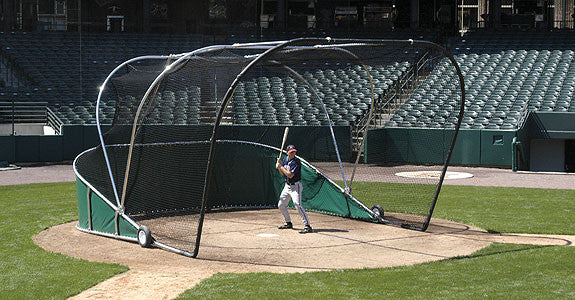Let's revisit drop third strike. Once again I watched ballgames have umpire ballgames that this gets to be an issue. First a drop third strike is any third strike that's called or swung at that strikes the ground before goes into the catchers glove or falls out of the catchers glove and goes to the ground, not being held securely from the pitch or from the swing.
Now that we've defined that when can you run you can run on third strike meets the definition above any time for spaces open. But here's where the confusion comes if first space is occupied with less than two outs (0 or 1) then the batters out automatically even if he attempts to run deficient not play he cannot advance in the runners can only advance at their own risk. Now here's where the confusion comes in with two outs in the same exact play occurring the batter can run even with first base occupied. Now normally the catcher would just simply throw to the first baseman and the batter would be declared out but we need to keep in mind that all the force rules are still in play. The one that we see most of the time is bases-loaded missed/dropped third strike catchers picks it up and touches home plate which is legal and the runner coming from third base is the one that's declared out.
We got into this discussion just the other day when one of the parents said they couldn't run with the runner at first base because the play before with less than two outs the umpire declared the batter out then sure enough with two outs the batter struck out again with the catcher dropping the ball and they allowed him to run to first with no throw because coaches didn't know the rule and everybody was safe. In the course the coaches one complain that he was out a minute ago and now you changed your ruling and now I safe of course that's not true the difference is one time was with less than two outs. The other time was with two outs.
We need to add to this a little bit, if a catcher does not touch the batter and the batter leaves the batters box and no play is made the runner could be told to run and go directly from where he stands to first base. This is a very valid rule in high school, college, Pro now when you what's major-league ball on TV you see this occur you see the catcher facing the batter in the batter is walking away that's considered a play in the runner has given up and become out but the catcher must acknowledge the runner and the runner must either start to first base or if he gives up he declared out. There's no such thing as leaving a box and being automatically out or leaving the baseline and being automatically out.
Umpire Arnald Swift
COPY CREDIT TO SITE STUMP THE UMP.
Dave from Clearwater, FL asks:
In game 5 of the Toronto and Texas 2015 ALDS, when Shin-Shoo Choo was in the box but his hand was left on the line of the box, Russel Martin went to throw back to his pitcher and the ball hit off of the batter's bat. How is this not interference since Choo's bat was on the line or almost in the field of play (close call) on Choo as Martin inadvertently hit Choo's bat on the throw back to the mound? Thus Rougned Odor scored from 3rd. Furthermore, umpires made a different call (which had the ball being dead and returning Odor to third) before reversing it to allow Odor to score. Why were they allowed to reverse it? Very confused as the rules in baseball are so complex compared to other sports. Thank you!
This play has caused a lot of confusion but this scenario is covered in the Major League Baseball Umpire's Manual. Ruling 29 of this book, which refers to MLB Rule 6.06(c), covers exactly how to handle throws back to the pitcher where the batter potentially interferes. This interpretation states that, as long as the batter does not intentionally interfere with the throw, then, if the batter is standing in the batter’s box and he or the bat is struck, then there is no infraction and the ball is still alive and in play. Even though Choo's bat was potentially out of the box at the moment when the ball hit it, since Choo himself was still in the box and he did not attempt to interfere with the ball, the ball should have remained live allowing the runner to have the chance to score.
The second part of your question is a part that I came across a lot tonight while reading comments on game recaps; why were the umpires allowed to reverse the call after already calling the play dead? It is always the first and main priority of the umpires to get the call right, even if that means reversing a call or making an unpopular decision. Being as this is a very unusual play and one that is not even covered in the general MLB rulebook but instead in their secondary Umpires Manual, it is hard to blame Dale Scott for freezing for a few seconds before calling this play dead. However, as the umpires are expected to do, they paused the game, got together to discuss the play, and then reversed it to ensure they got what very potentially could have been a game deciding call correct by deciding what would have happened if the play hadn't been stopped.
Answered by: Jonathan Bravo
Keywords: MLB Rule 6.06(c), MLB Umpire Manual, Choo, Odor, Martin, Toronto Blue Jays, Texas Rangers
Just saw this on TV this past weekend in a professional game, on the MLB channel. And thought it was worth a quick discussion to try and clarify again.
Situation was a runner at first base with one out. A line drive was hit to the second baseman who caught it for the second out. He then tried to throw to the first baseman to double off the runner but he hit the runner in the head which caused the baseball to bounce into the dugout. The umpires awarded the runner third-base, then you could see on TV the manager holding up two fingers and talking to his coach and saying is that right.
The answer is it was correct the rule states runners shall be awarded two bases from the base they last possessed at the time of the throw-- key issue here at the time of the throw not when it left the field--. This runner possessed first base, it makes no difference that he was going back to first, when the throw was made and then went out of play so he was awarded third. I would also interject here that if a pitcher throws the ball while touching the rubber, almost always during a pickoff attempt, then there is an exception it is only one base if a pitcher throws it out of play. However keep in mind if the pitcher steps back off the rubber he now becomes an infielder not a pitcher and you would award a runner two bases if the ball would go out of play.
I just thought it worth noting that even at the highest level of play coaches and players are not aware of the rules, I think one of the best things a coach can do is know the rules. You can argue all you want about balls and strikes, safe and out and you'll never get anything done but if you know the rules then you have a chance to make your point and get something accomplished positive to your ballclub.
Umpire Arnald Swift
UmpireI was watching my son's game last night at the high school level. I saw something during the game that caused me confusion, can you straighten me out as to what and when a batter can run a dropped 3rd strike.
Fred
==========================
Fred
you are not alone a lot of people are confused including the players on this situation. There are a couple situations when the batter can or cannot run after dropped third strike.
1. He can always run after dropped third strike if there is no one on first base.
2. Cannot run I dropped third strike if there are less than two outs and first base is occupied.
3. This one is the one that seems to cause most confusion if there are two outs and regardless if first base is occupied or not a batter can run on a dropped third strike.
Note to go along with the question. The catcher need to know not to make a play on a runner that takes off to first with first occupied and less than 2 out. The umpire will help but it is his responsiblity to know not to throw. Then with 2 outs and the runner moving to first that batter/runner must be put out OR they can put out any runner that is in a force play situation. It does not have to be the batter/runner that is played on for the 3rd out.
Hope this helps.
Ump Arnald Swift
Hey Ump, I have another question. If the batter hits the ball down the first baseline & the 1st baseman fields the ball in front of the bag with one foot in fair & the foot in foul territory,is the ball fair or foul?
Answer:
I really can't answer your question because the player has nothing to do with whether the ball is fair or foul. In the baseball what determines if a ball is fair or foul is where it's located when touched by a player. If the ball is on or over line when touched then the ball is fair regardless of where the player is. It is quite conceivable to have a player in fair territory when he touches the ball, but the ball is located outside of the line, therefore it is foul. To expand on this little bit a ball that is it and touches the ground in front of first or third base then passes over or inside of the base is fair regardless of where it touches after it passes the base. If the ball is in flight when it goes past first or third in what determines it to be fair or foul is where it lands or is first touched by a player. Therefore the reason I couldn't answer your question directly is you didn't tell me where the ball was when touch, and the player position has nothing to do with determining fair or foul.










